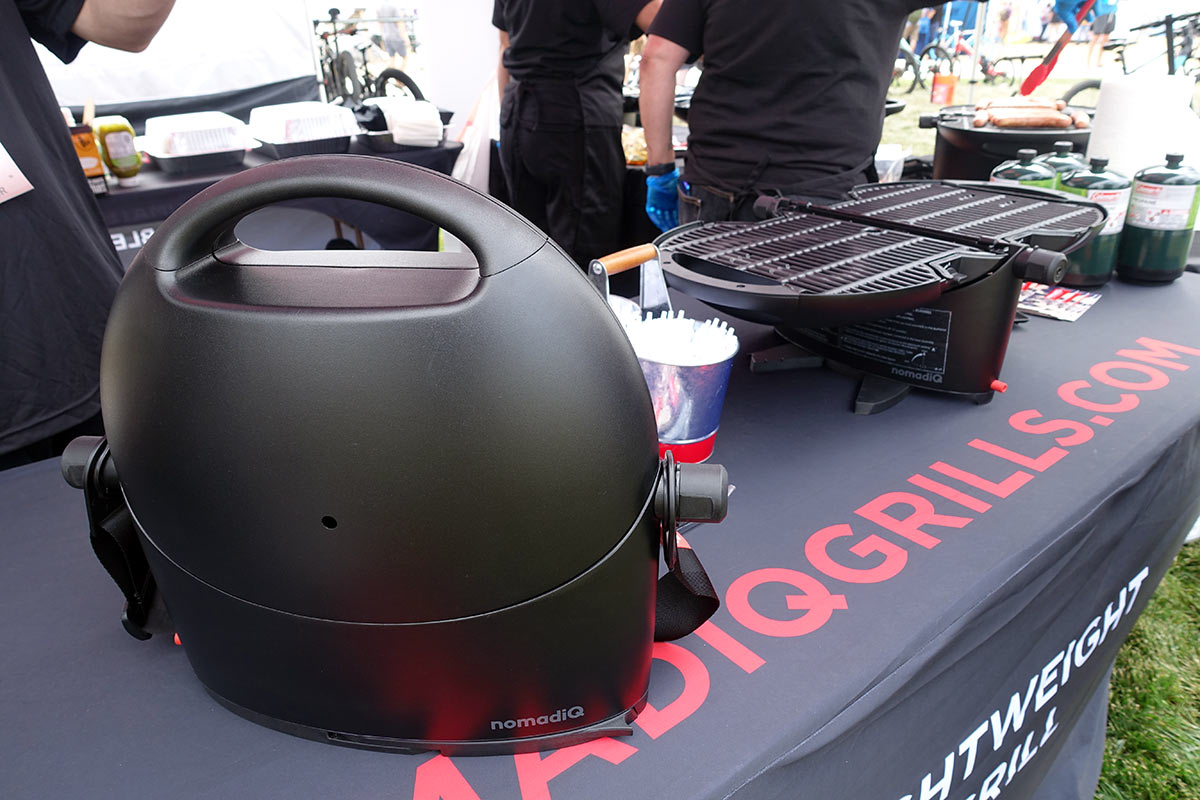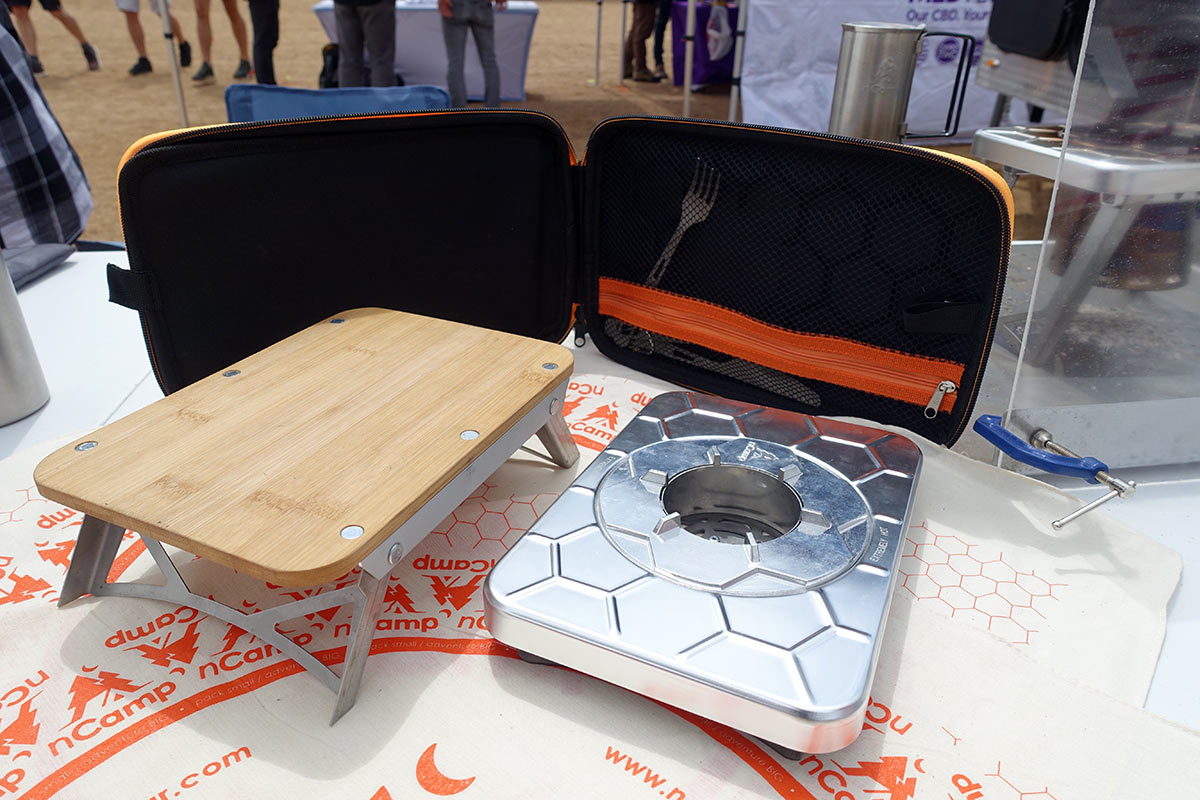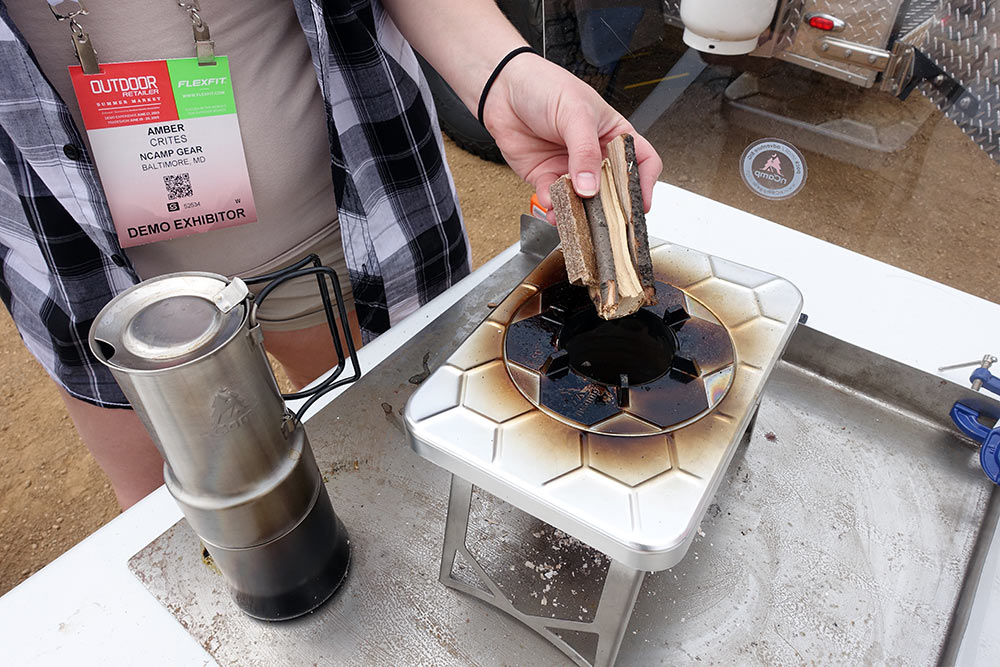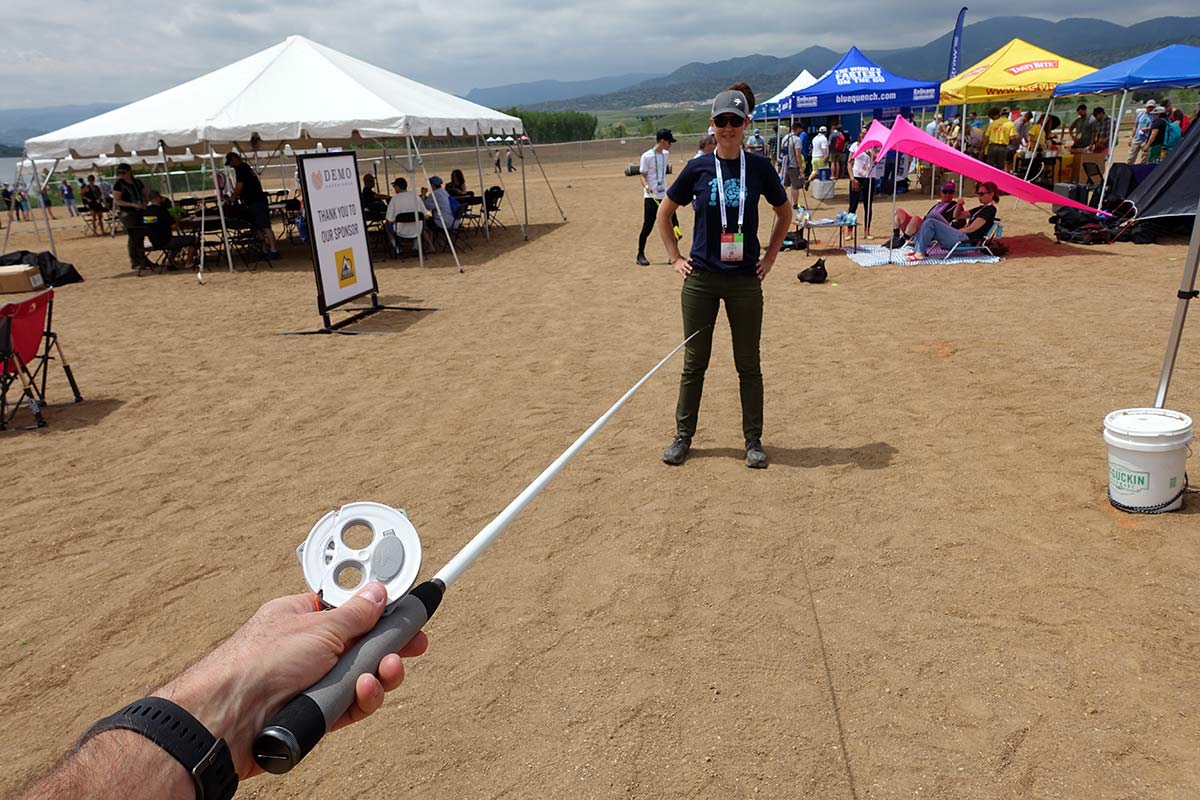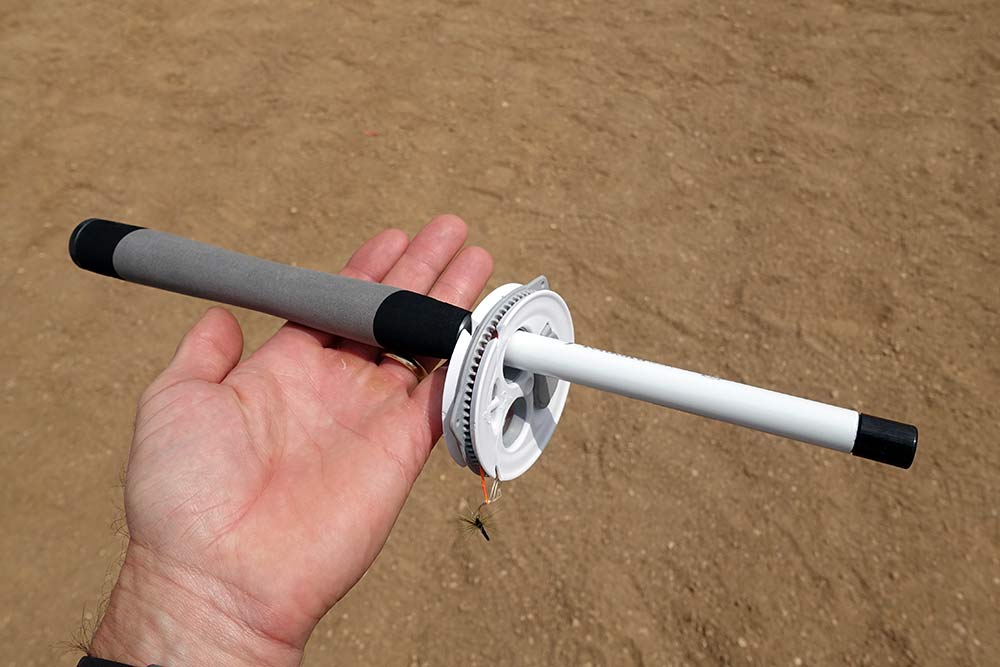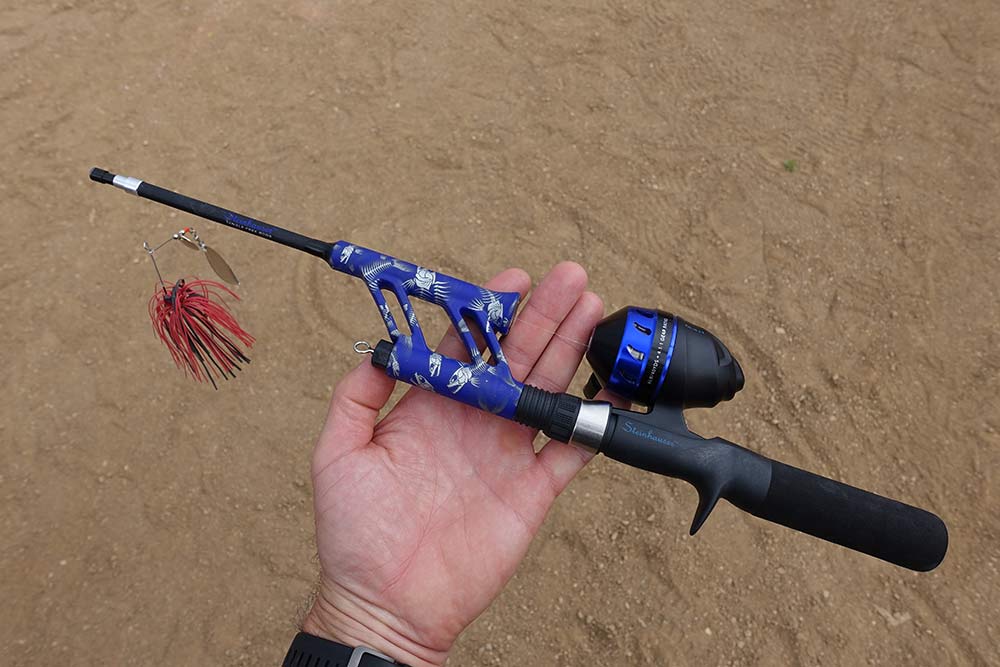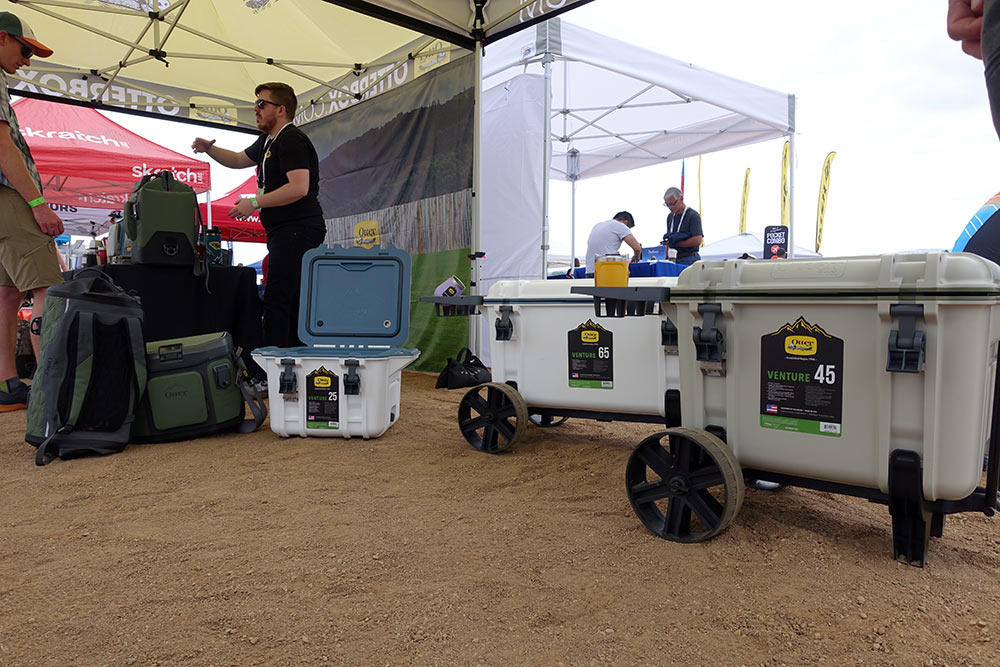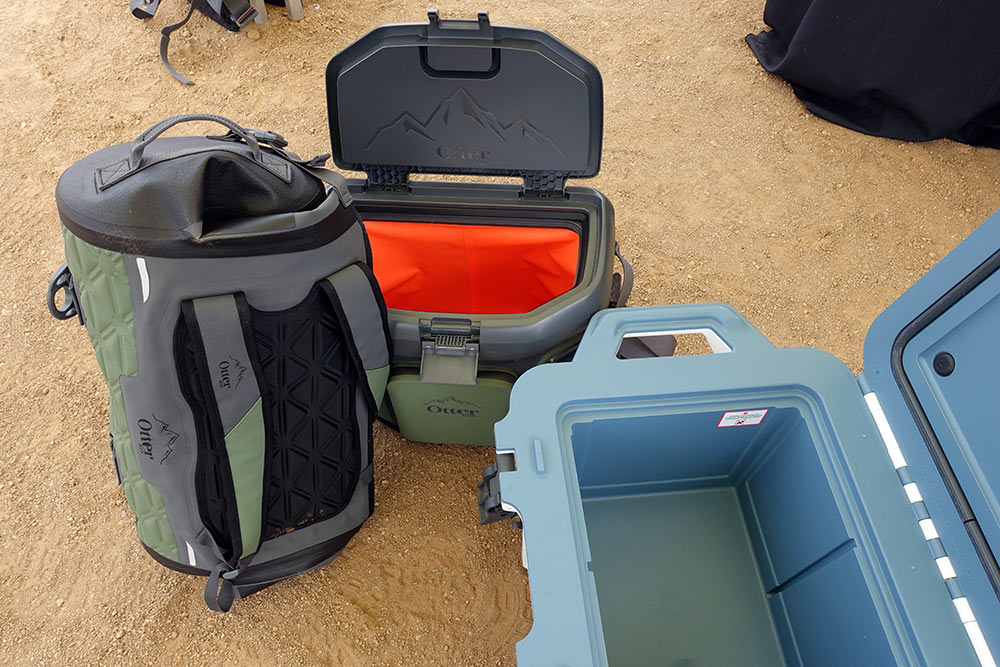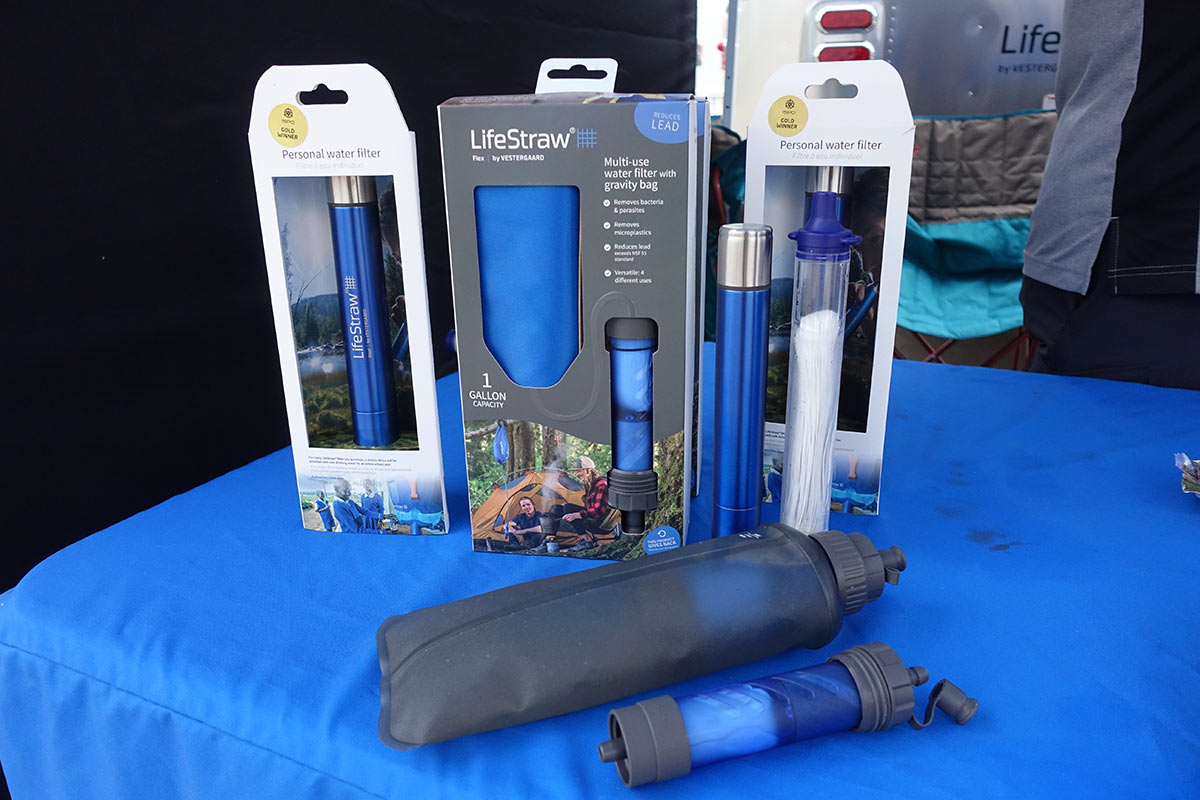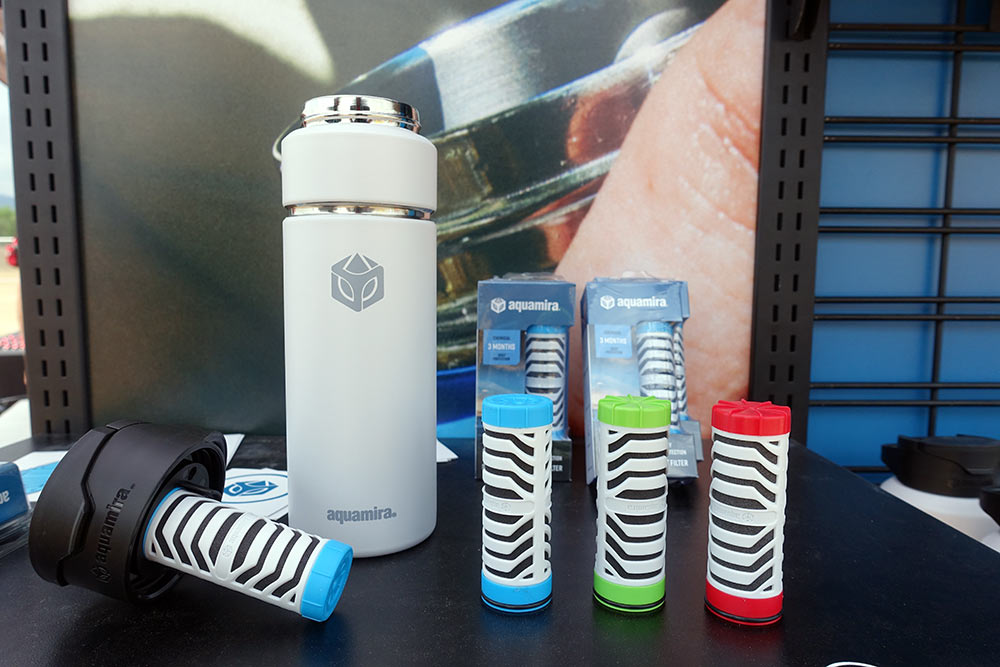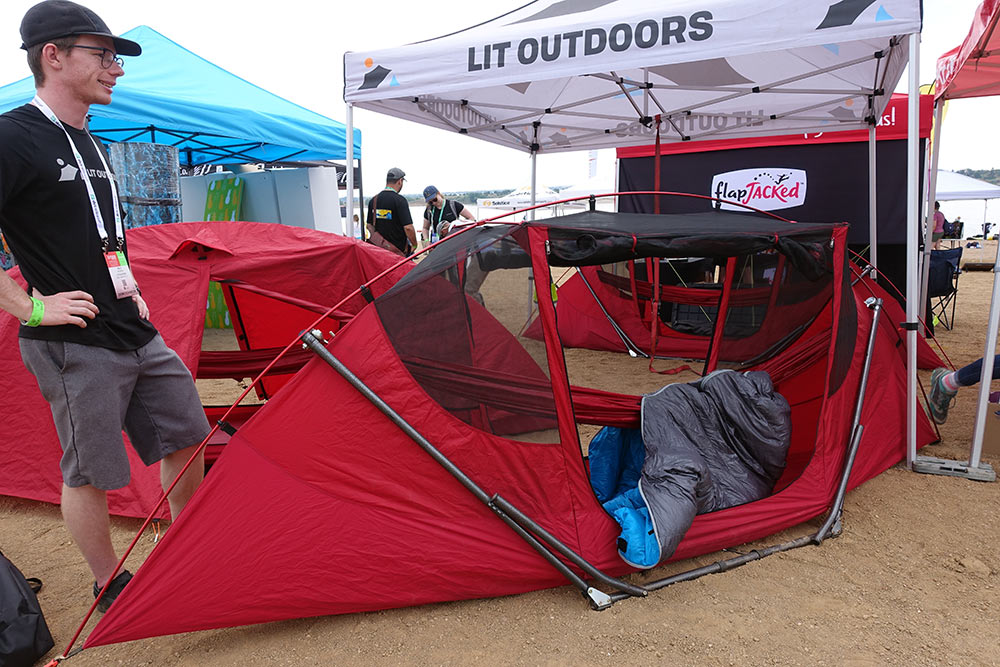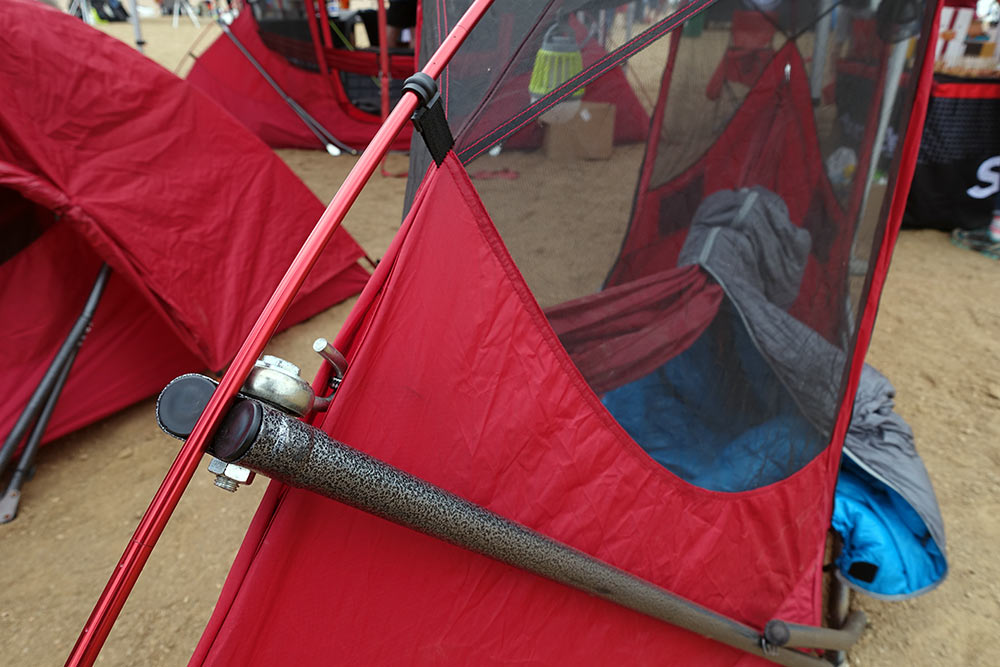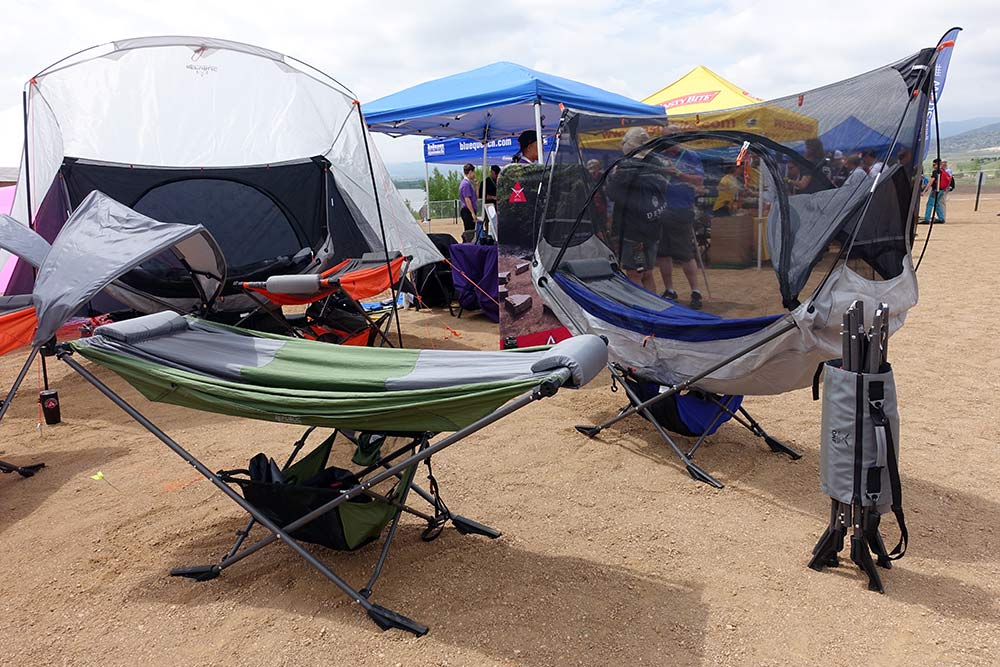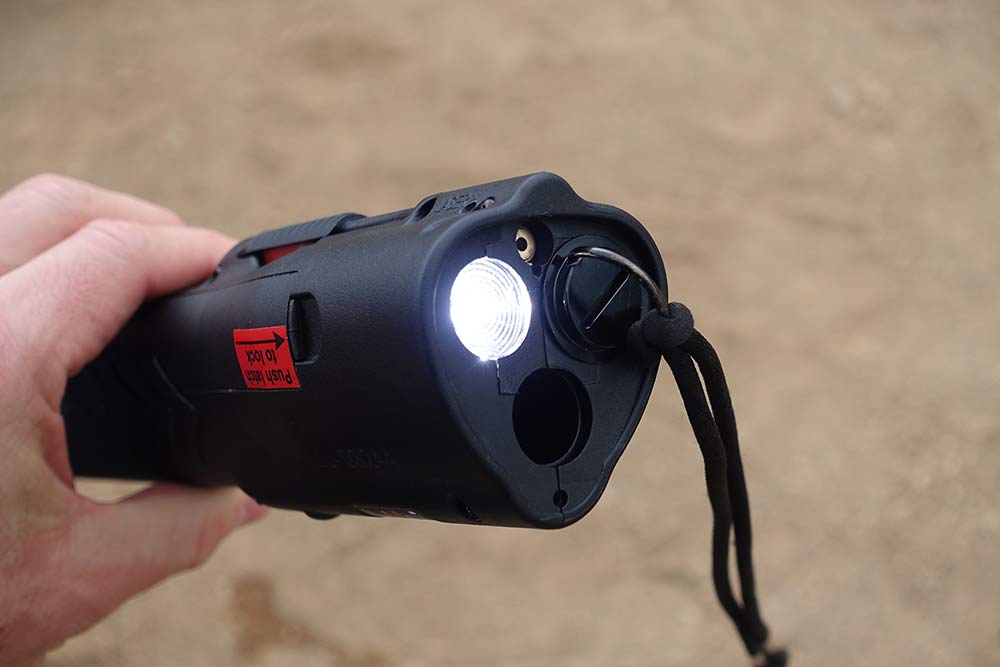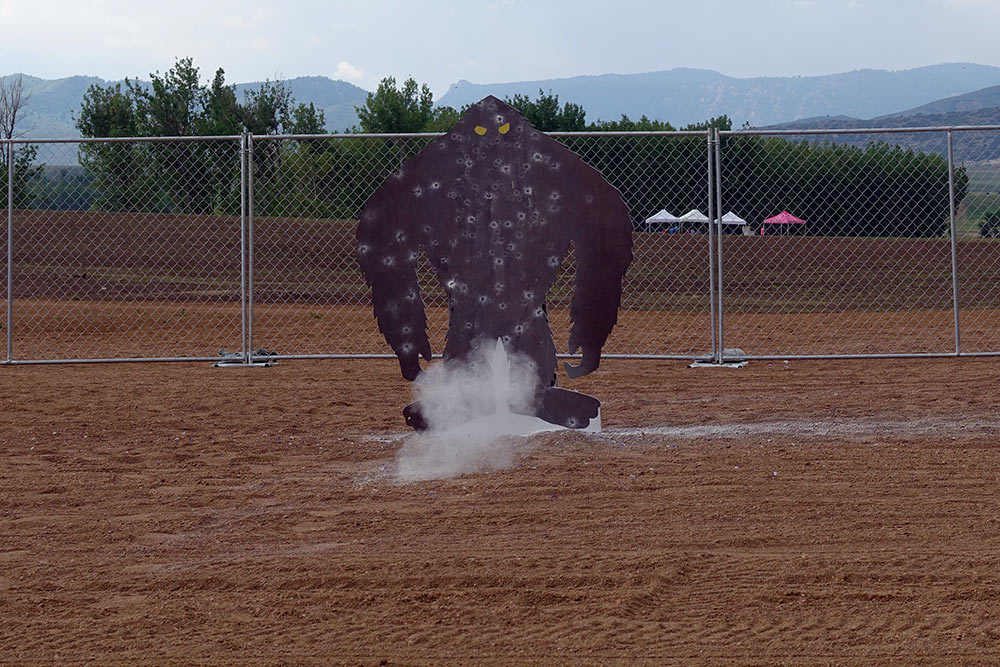Outdoor Retailer Summer 2019 kicks off today, but we got a preview of a few killer new items to round out your bikepacking and car camping trips. Everything from ultra-portable grills, minuscule fishing rods, shelter, inflatable kayaks light enough to bring on your bike, and more…including a flashlight that shoots paintballs filled with pepper spray. Here’s our first roundup of many from Summer OR!
Cooking light with portable grills
The Nomadiq is a tiny, 12.3 lb portable gas grill that’ll run just $349. It has independent temperature controls for each side and uses any propane tank, small or large. They also have a great retail support program that lets any store, online or brick-and-mortar sell it, then they’ll drop ship for free. And, when they start selling direct online, they’ll use a higher price so as not to compete with their dealers.
For something you could throw in your backpack or frame bag, the nCamp Gear multi-fuel grill folds down almost flat for use with solid fuel like twigs and sticks. Pop it up to insert an alcohol fuel canister, or attach the optional butane camp stove fuel can adapter.
They’re reasonable, too, with the Multi fuel stove selling for just $59, the Prep Surface for $29, and the travel case (which fits both because they nest together, for $25.
Catch something to cook
Before you can cook, you’ve got to catch something, and the new Tenkara USA Hane (pronounced “hah-nay”) runs $150 and measures 10’10” extended, but only 15” collapsed. And it weighs just 3.5oz.
The line kit, which includes a fly and other bits you need to use the rod, is $44.
If you prefer a reel, or want something for the kids to try, the Steinhauser Tanglefree PocketCombo rod and reel set collapses down almost as small, but only extends to about 3′ total. And it’s only $29.
Ultralight inflatable kayaks get you from bike to boat
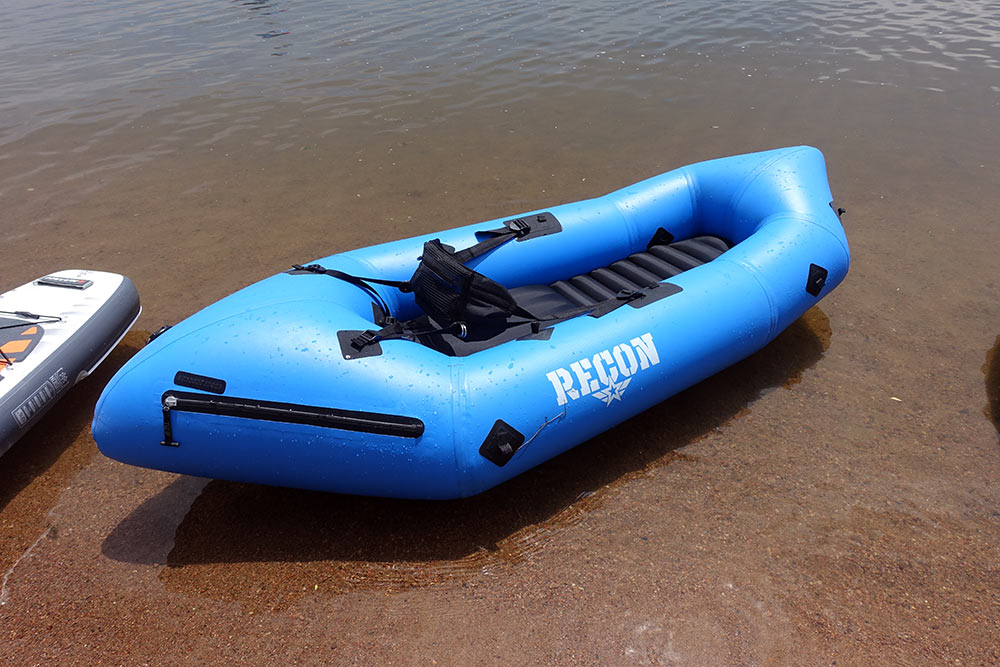
If those rods aren’t catching anything from the shore, pull the 5lb Kokopelli Packraft Rogue Lite ($800, shown below) out of your frame bag or backpack, inflate it, and you’re off to hunt bigger fish. Or just float, or run some lite rapids. Yes, they’re tough enough for that, and yes, they deflate to fit into that pack sitting next to the boat…with room for the pump, too.
What really sets the Rogue Lite apart is the airtight zipper on the front that lets you stuff the bag inside it, holding all your gear and keeping it dry and safe, then inflate the raft. This is a totally bike-packable raft, and it’s amazing.
Keep your food cool and safe
Otterbox’s coolers are over the top, with intricately sealed lids and bomber construction and come in several sizes. But it’s the soft coolers that are really something:
From a soft-sided cooler bag with a hard top with clever locking lid, to several sizes of cooler backpacks (including one so big you probably wouldn’t really want to wear it when full of drinks and ice), they’re worth checking out if you can’t seem to find the right kind of cooler for your adventures.
The Stasher resealable silicone bags keep your food (and leftovers) tightly sealed and safe inside those coolers. Or your jersey pocket. Or hydration pack. Which makes them a great way to pack ride snacks that you can just grab and go. They wash clean and won’t hold flavors, either.
How to filter your drinking water, no matter where you are
One of the biggest safety concerns with bikepacking in remote areas, or just drinking from questionable taps and fountains, is whether the water is safe. With the new LifeStraw Flex Gravity (centered in image above), you can fill up a one-gallon bag with dirty water and let gravity pull it through the filter to fill your bottle or reservoir. It uses the same Flex filter system from their soft flask bottle (foreground), which you can use as an inline filter for your hydration pack hose in a pinch.
Both filter out chemicals (chlorine, lead, asbestos, etc.) and biological nasties (bacteria) and are good for 500 gallons. The Flex bottle is $35, and the Flex Gravity is $55, both include one filter. Click to enlarge and you’ll see the white filaments that look too loose to filter anything, but they actually work by pulling the water into them, then the clean H2O escapes through microscopic pores that trap the stuff you don’t want. The charcoal filter on top handles the chemical stuff.
Aquamira launched the new Shift bottles, which work with their inline filters and retail for $40 (32oz) and $35 (24oz). They offer three different filters, letting you choose the best type of protection for your adventure:
- Blue line – school/work, removes chemicals (chlorine, lead, arsenic, etc. – 50 gallons – $15
- Green line – backcountry, adds bacteria protection- 1000 gallons – $30
- Red line – world travel, adds virus protection, too – 120 gallons $40
The Aquamira brand name will be replacing the Geigerrig line, which uses the pressurized system shown on the right. Aquamira was originally known for their chemical water treatment (the drops system shown on left in left photo), but they’re expanding the mechanical filtration systems and will be refining the product line under the new parent name. Their filters actually snap into a Hydrapak reservoir’s hose system, so you don’t have to cut the hose like with the LifeStraw system. Of course, if you’re using this for water with possible bacterial/virus contamination, be sure to sterilize the bladder afterward!
Time to sleep in a hammock, trees or not
LIT Outdoors, which stands for “Life In Tents”, wanted a way to enjoy their hammocks throughout Utah’s national parks, which are often low on trees and high on rocks. So they created the Tammock, which uses a hard frame to support a hammock, then builds a tent shell around it.
It starts shipping in September. Price is $350 for a complete kit with hammock, poles and frame, tent, and rain fly. You can also use your own hammock if you want.
Republic of Durable Goods had a similar tent/hammock combo, but without the all-seasons coverage. Choose from a simple head shade or bug fly, their frame pops open more like a folding chair, albeit with a few poles to connect.
Protect your camp…and your bike
Easily the most interesting combo item at the demo day was the PepperBall LifeLite Launcher. It’s heavy, but it’s awesome, and could be a great way to fend off wild animals if you’re really riding in remote locations.
The unit weighs in at 1.75lb and combines a 350 lumen flashlight with what is essentially a CO2-powered inline paintball gun. Except you’re not firing paint, you’re sending pepper-spray filled projectiles at your would-be assailant.
Ok, but why not just get bear spray? Couple reasons. First, they say this stuff is far more potent, because it’s rated to repel evil humans. And the laws allow that pepper power to be more potent than what can be sold for use on animals. Second, these explode into a ~12 foot cloud of gas, so you don’t have to be super accurate. In fact, they say your best bet is to just aim low so it hits the ground in front of the target and puts a cloud of pepper spray around them.
It has a double safety to prevent accidental firings. To use, you have to pull the pin, then slide the cover forward to reveal the trigger button.
It ships with a couple of CO2 canisters and sets of active and inert balls, giving you a chance to practice your aim without using up the good ammo. And each refill pack includes inert balls, too, so you can stay on top of your game, er, aim.
